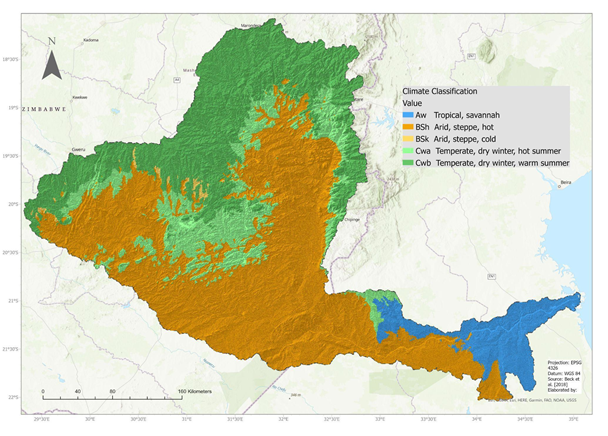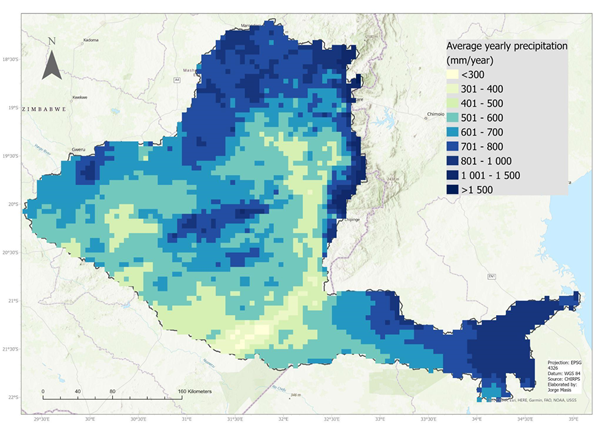Save river basin - Climate
Classification
The map below shows that, from the Köppen-Geiger 1 km resolution climate classification, the basin is mostly classified under the climate zone BSh, corresponding to an arid, hot climate (Beck et al., 2018). Northern sections of the basin are categorized as Temperate climates and the lower basin is mostly Tropical savannah.

Precipitation
The climate is seasonal with a rainy season from November to March, areas within the catchment receiving more rainfall are estimated to have around 1500 mm rainfall per year and are dominated by mountain climate conditions, while other southern parts are much drier and estimations have them around 300-500 mm/year (Massuanganhe et al., 2015; Nyoni et al., 2013). The map below shows the average yearly precipitation and its spatial distribution, data was obtained from the CHIRPS (Funk et al., 2015), for the period corresponding to 1981-2021. It indicates that the upper mountainous parts receive the highest amounts of rainfall, at the same time some other regions show lower rainfall detections. In Mozambique, the basin covers an area dominated by humid and tropical climate with average precipitation ranging between 600 and 750 mm/year (Massuanganhe et al., 2015).

(Ray et al., 2022b) mention that the monsoon in Southern Africa exhibits a synchronization with the behavior of monsoons in other global locations, with related influences via teleconnections to climate drivers such as the Atlantic Multidecadal Oscillation (AMO) and Indian Ocean Dipole (IOD) and to some extent to the El Niño Southern Oscillation (ENSO).
Projections
Studies and institutions have projected an increase in dry spells over the entire southern African region, under the 1.5 °C GWL (global warming levels). The Coordinated Regional Climate Downscaling Experiment (CORDEX) models significant decreasing trends in future rainfall as well, while there is an expected greater unpredictability in monsoon behavior in southern Africa in the future (Ray et al., 2022).

